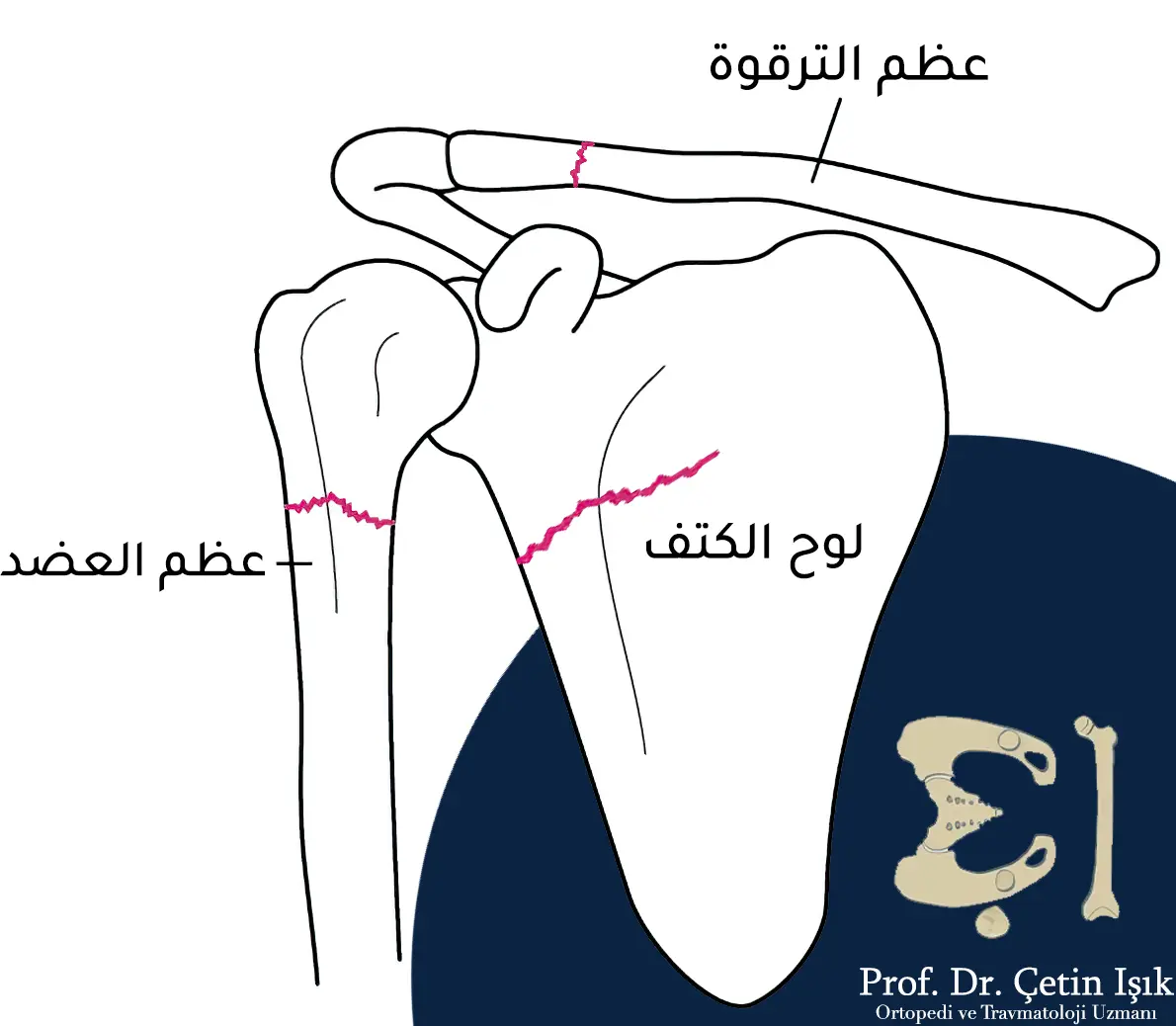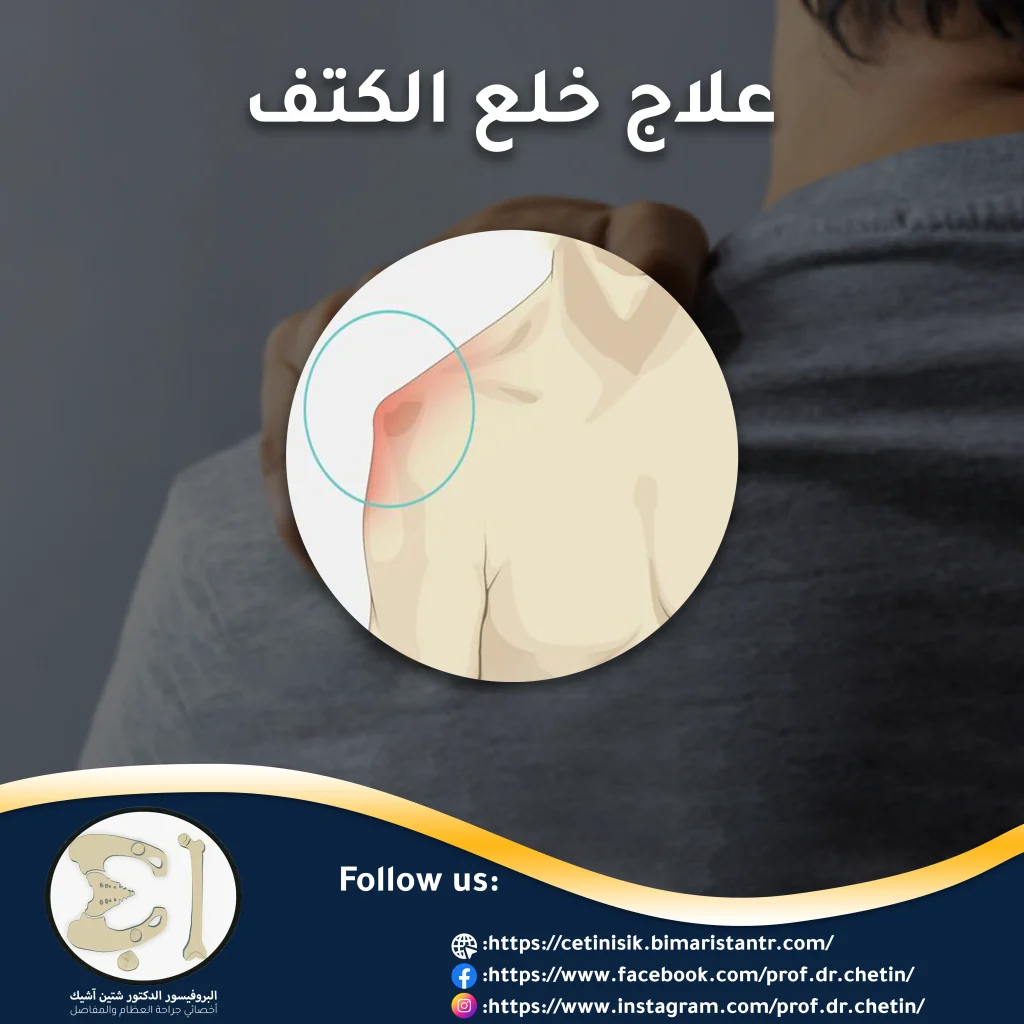Shoulder fracture treatment is usually done conservatively without resorting to surgery. Treatment varies according to the type of fractures in the shoulder joint. Treatment may be for clavicle fractures or for shoulder dislocation.
The treatment of a shoulder fracture shoulder fracture treatment It depends on the location of the fracture and its severity and on the age of the patient as well. Therefore, sometimes the treatment for some types of fractures in the shoulder joint may be surgery, such as alternating fractures or open fractures, but shoulder fractures are often treated without surgery by immobilizing the shoulder joint and treating the symptoms of the shoulder fracture, after determining the type Fracture by X-ray or magnetic resonance imaging when needed. The type of fractures in the joint and their severity determine the time required for the fracture to heal. The treatment of a shoulder fracture is not limited to treating the fracture, but also includes treating other injuries to the joint tissues.
In this article, we will learn how to treat a shoulder fracture without surgery, when to resort to surgeries, and ways to treat a dislocated shoulder.
The most important information about shoulder fracture treatment
When a shoulder fracture occurs, either due to sports activities or due to exposure to a fall from heights and the occurrence of strong bruises in the shoulder, one of the components of the shoulder joint may be injured, i. It is common in the elderly over the age of 65, and fracture of the shoulder bone is rare and occurs mostly due to very strong traumas such as car accidents.

Treatment for a shoulder fracture includes treatment Clavicle fracture or Shoulder fracture treatment Or treatment of a fracture of the upper arm bone, and since most of the shoulder fractures are not displaced, as 80 % bone fractures in the shoulder joint do not move out of place, and therefore treatment is usually done conservatively without serious complications and without resorting to surgeries, 20 % out of Shoulder fractures are highly variable and usually require surgical intervention. Treatment also includes shoulder dislocation and rotator cuff muscle rupture.
Shoulder fracture treatment without surgery
Conservative treatment is usually used in people with shoulder fractures that are not serious and unchanged or that do not contain bone fragments. The most important methods of conservative treatment of the fracture according to the type of fracture are:
- Wearing fixation devices to prevent movement of the shoulder and immobilize it in order to heal the broken bone parts by fixing them in their correct place. Immobilization devices such as a shoulder sling (containing a belt in order to choose the correct position of the shoulder) or a splint are placed in order to orient the shoulder for several weeks or more, depending on the severity of the fracture. or the patient's pain.
- Avoid sports activities that may cause a shoulder bone fracture.
- Giving some analgesics to treat the pain of shoulder joint fractures.
- Fractures in the shoulder joint may be treated by applying an ice pack to reduce swelling in a simple fracture.
- Complete Shoulder dislocation treatment By returning the arm to the shoulder joint socket when the shoulder joint is dislocated, and also using anti-inflammatory medications when present Inflammation of the shoulder joint After taking off.

Surgical treatment of a shoulder fracture
When the shoulder fracture is severe due to a fall and strong bruises, or when the shoulder fractures are highly variable, or when the head of the arm is broken, or when the shoulder is deformed and the tendons, ligaments, and muscles are damaged, surgical procedures are often resorted to fixing the bones in their correct place and restoring the shoulder joint as it was before, including There are multiple bones in the shoulder joint, so the types of surgeries vary according to the location and severity of the fracture. It may occur either in the clavicle, arm, or shoulder blade. The most important surgeries are:
Shoulder fracture treatment with surgical fixation
In this technique, the broken bones are fixed in the shoulder joint through the use of plates or screws and nails to return the bone fragments to their original place. This type of operation is used in open fractures and highly dislocated fractures that need surgery very urgently, as soft tissues and ligaments are also repaired. and tendons injured during the operation.

Shoulder fracture treatment with partial joint replacement
This treatment option is performed by replacing the damaged head in the arm bone and the upper part as well with a metal ball that has a leg to fix on the body of the humerus. This treatment option is used in the case of an acute fracture, as it helps relieve pain during movement and improves the motor function of the joint.
Shoulder fracture treatment with total joint replacement
is resorted to Shoulder joint replacement surgery The entire body is by replacing the head and the damaged acetabular cavity with a metal ball and an artificial cavity, which are connected to each other and then fixed in the shoulder joint. This process is used to treat very severe shoulder fractures, and it helps to get rid of pain and re-move the joint properly.
Post-treatment of a shoulder fracture
Shoulder fractures as well as shoulder dislocation and clavicle fracture severely affect shoulder and arm movement Shoulder fracture treatment Completely, physical therapy must be followed, because when there is a broken shoulder and dislocation as well, the patient often suffers from stiffness of the shoulder joint and the occurrence of frozen shoulder Which is one of the common complications after shoulder fractures. Physiotherapy is useful in increasing the ability to move the joint normally and increase its strength. Physiotherapy should be through a specialized doctor to protect the injured person from recurring shoulder dislocation due to wrong treatment and avoid muscle spasms in the shoulder.
In the end, the treatment of the shoulder fracture is primarily related to the location of the fracture and its severity. The fracture may be in the clavicle, the scapula, or the humerus bone. Therefore, first, the fracture area must be diagnosed through usually simple x-rays, and then the type of treatment must be determined according to its severity. The treatment may be either conservative or Surgical. Fractures are often simple cracks that are treated conservatively without the need for surgeries, but some types of shoulder fractures need surgical intervention due to the failure of conservative treatment.
Sources:
Common questions
The recovery time for shoulder fractures varies from one patient to another depending on the severity of the fracture and the age of the patient. Child fractures heal faster than adult fractures, but most shoulder fractures take about 6 weeks or may range for several months to heal.
Shoulder fractures heal by making the ends of the bones converge and fixed either by following conservative treatment or surgical treatment, depending on the type of fracture.
The fracture is diagnosed through clinical examination, radiological diagnosis, and symptoms that appear after the fracture, such as pain, swelling, and redness.
Most shoulder fractures heal by conservative treatment, but there are some severe fractures that need operations due to failure of conservative treatment or to the distance of the ends of the broken bone.
The shoulder should not be moved too much until the fracture has fully fused, because moving the shoulder before fusion of the fractured bone may cause dislocation of the shoulder or additional fractures.
The most common symptoms of a shoulder fracture are pain, redness, swelling, deformity in the shape of the shoulder, or shoulder dislocation, and hearing a bone crack during the fracture.
When a shoulder dislocation occurs, the shoulder must be re-dislocated by returning the arm bone to the acetabular cavity, then the shoulder is tied by wrapping it with a corset with four crossed lines in the shape of the letter X, where the middle of the intersection is above the middle of the lateral shoulder muscles in order to prevent the shoulder from being dislocated again.




